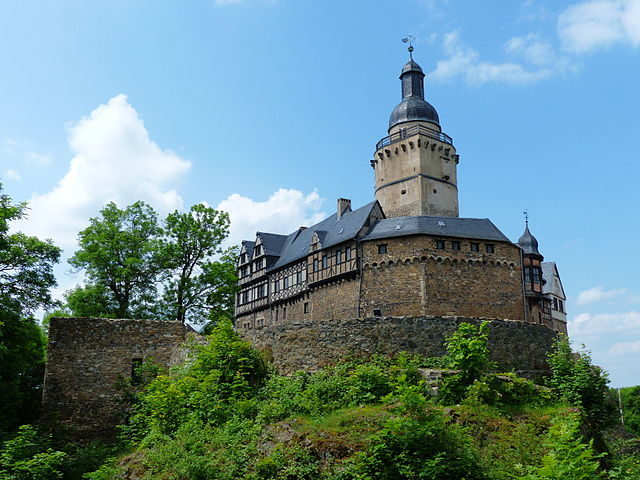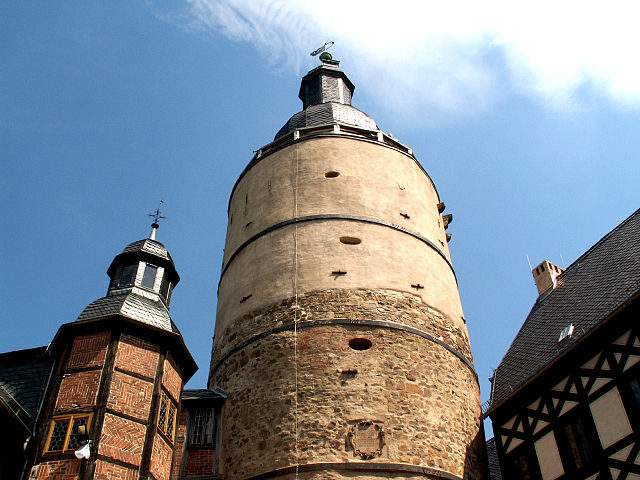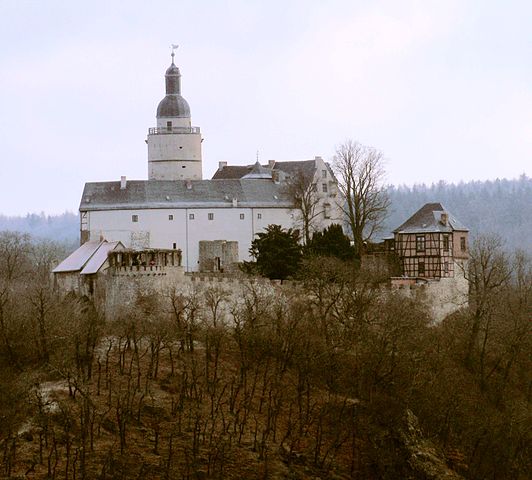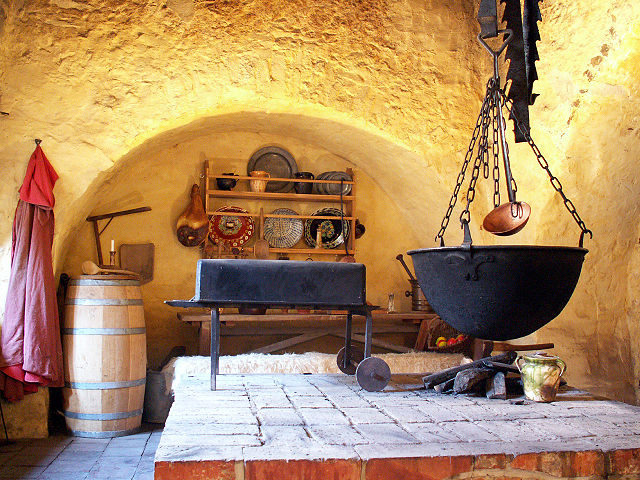Falkenstein Castle is located in the Harz Mountains of Saxony-Anhalt, Northern Germany — a region where fairytale villages and medieval strongholds abound. The best preserved hill castle in the Harz, Falkstein is situated in the middle of the beautiful and scenic Harz/Saxony-Anhalt Nature Park, at a height of 1050 feet (320 m), and looks out across the wild, romantic landscape of the Selke Valley.
In the past, it was referred to as New Falkenstein Castle in order to be distinguished from, of course, the Old Falkenstein Castle which once stood nearby.

All that remains today of the old, high medieval castle — Burg Alter Falkenstein — is traces of some earthworks, including the moat and northern ring wall. The burgstall (castle site) is easily accessible for hikers.
The New Castle was built between 1120 and 1150 by the lords of the Konradsburg. There is a legend that it came about because of a murder – a fight that took place in the 1080s, where the nobleman Egeno II of Konradsburg killed Count Adalbert of Ballenstedt.
Supposedly, the murderer had to give up his home castle to the church to be turned into a monastery. Because Egeno II of Konradsburg was a noble man and a man of his word, he gave up his castle. His son, Burchard of Konradsburg, decided to build the New Falkenstein Castle after finding himself without his expected inheritance.

During the following couple of centuries, the new castle played several big roles in European history. In 1220, it was the place where the first law book to be written in Middle Low German (as opposed to Latin) was produced by Eike of Repgow.
Titled Sachsenspiegel (literally “Saxon Mirror”), it is considered the most important book of law of the Holy Roman Empire. The book was commissioned by and dedicated to the owner of the castle at the time, Hoyer of Falkenstein.

Some 200 years later, during the time of the feudal lords, the castle was given as a fief to the House of Asseburg, an old Lower Saxon aristocratic family.
The New Falkenstein Castle was built in Romanesque style. It was modified many times during the centuries but never shook off the original character. With its seven high gates and five swingers between the walls, it stood up to many attacks.
The outer wall, at its highest, reached 56 feet (17 m). In the very center stands the tallest structure: the 101-feet-tall (31 m) bergfried tower. It is still operational today and is open to the public as it offers a great 360-degree view around the site.

To this day, Falkenstein Castle is one of the most impressive and best-preserved castles in the heart of the Harz Mountains. It is still open for the public and easy to access and visit. Of course, the site has a museum, which is home to an exhibition dedicated to the history of the castle, and an exhibition devoted to the “Saxon Mirror”.
Another Article From Us: Derelict Romanian Synagogue
Probably the most interesting and peculiar things are the museum’s own falconry and the restaurant, which serves traditional food for proper knights.
